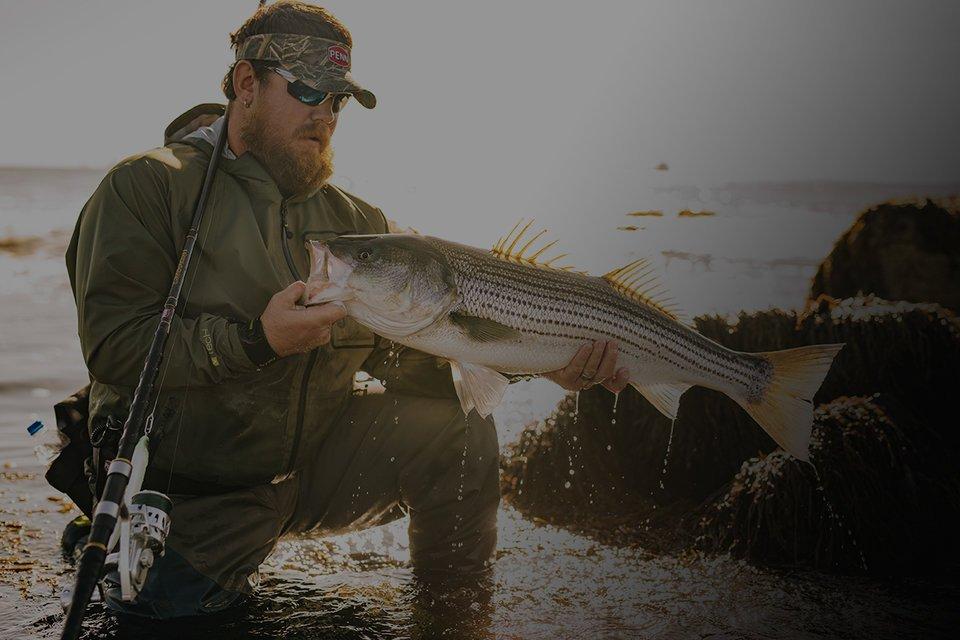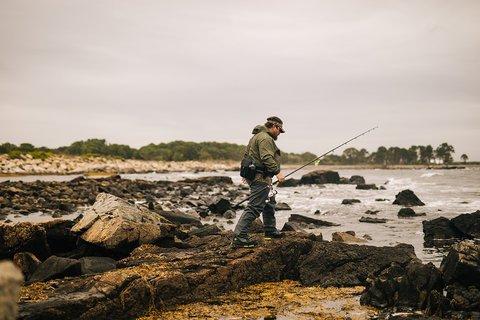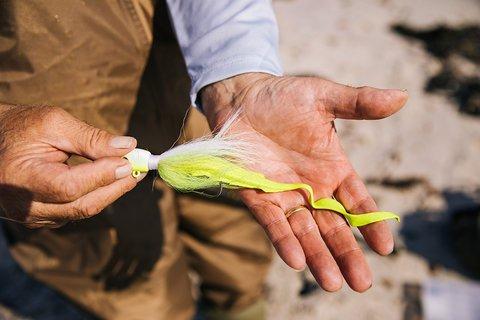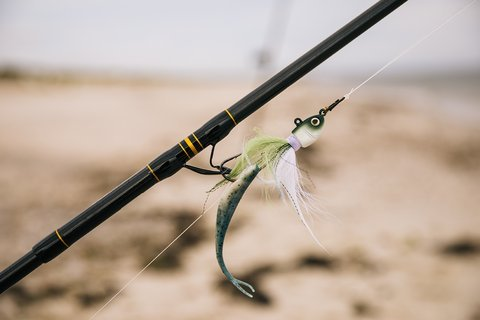5 Tips for Catching More Fish off Structure

Structure is a critical element for surf fishing and learning to read everything from subtle current breaks to rocks and even man-made piers and elements is imperative for success in the surf. The reason structure stands as such an important factor in surf fishing is the simple fact that is houses food sources along with a variety of fish that depend on the structure for shelter against fish occupying higher levels in the food chain. The first piece of the puzzle is identifying viable structure and the second is employing an effective strategy to target a variety of species in the area.

Scouting for Success
Fishing blind with some success is definitely possible, but scouting delivers a huge advantage for surf anglers. Wait for low tide and drive the beaches with a pair of binoculars. Walk where you can’t drive and enjoy stretching your legs while getting out with friends, family or your dog.
While walking and scouting, hand draw a map of the beach with geographical features for future reference. Mark trees, land based structures and other reference points relative to visible fishing structure. Any parallel reference points are also valuable for gauging the distance of structure when the tide rises.?
Walking the beach and actually seeing and feeling the ground on foot is really the best method of getting a read for the structure and bottom features. While walking, you can actually feel the elevation changes that create buckets and troughs in some areas.

Plan Around the Tides
Now that you have a map of the structure available, plan the actual fishing trips based on the tides. You also will work specific areas at high, mid and low tide based on the structure previously observed. Playing the tides is essential and timing really is everything.
High tide is the safe bet and most surf fishing resources advise focusing on the high tide. This advice is good but surf fishing on just about any tide is possible. Some of the best fishing happens as the tide comes in or out because the baitfish and food resources are forced to relocate. This also plays into the role of structure because changing tides force movement around features offering cover.
Fishing the outgoing tide is a great approach as the structure available diminishes. Show up just before peak tide and get your line in the water. As the tide recedes, really watch for action as batifish, shrimp and crabs are forced away from safety. Sportfish are very active as the tide goes out because they have higher success rates at consuming calories. Once the tide is completely out, the fishing tends to become more difficult unless a stable structure like a pier or jetty is present to continue housing a combination of sportfish and food resources.
As a general rule, the hottest action happens on the high tide and the outgoing tide. Plan your fishing to really focus on these key times. Tide charts are easy to find online for most areas.

Preserving Hooks and Lures
Fishing around structure comes with some risk and losing expensive lures and baits is bound to happen. Mitigate this risk by utilizing weed guards if plant matter is present and pay close attention to depth and hazards. It really comes down to a feel-based approach when working a cast and retrieve technique.?
Topwater is generally safe and Berkley’s Fusion19 Bucktail Jigs are fantastic because they move in a vertical motion that is less likely to snag. Rigging a Gulp! Alive! Minnow or Gulp! Saltwater Jerk Shad with a sliding bullet weight or jig hook uses the same weight forward approach that helps prevent snags. The horizontal retrieve of lures however does require close attention to the route. Monitor the depth and speed up the retrieve if the lure feels close to rocks and other snags.
Fishing on the bottom with a heavy-weight offers less control in terms of the exact landing point. In most cases, the angler winds up and casts as far as possible. This is normal and works well but shortening the cast or aiming for a specific area can help place the Gulp! soft-bait in a better zone while reducing snags
For example, fishing around an area that is busy with rocks does not warrant a blind cast. The weight is liable to land right on a pile of rocks where it never really sinks into a feeding lane. Aim for a deep gap or funnel between the rocks where the bait can intercept traveling fish. This will reduce snags while increasing success rates.

Types of Structure
Not all structures are created equal. Some areas are exceedingly obvious and capable of drawing consistent numbers of fish and anglers alike. A pier with a bait shop onsight and bragging wall falls under the category of obvious. Jetty’s and rock formations that are easily observed and accessed are also obvious areas.
A subtle trough or a submerged rock formation, reef or even a sunken watercraft can act as less obvious but equally productive area. Finding these gold mines means you can fish without the crowds and have great success. Doing the research and scouting most often leads to discovering these fantastic structures where baitfish congregate. Focus on Fusion19 Bucktail Jigs and soft baits like the Gulp! Floating Minnow, Gulp! Baitfish, Gulp! Shaky Shad and Gulp! Alive! Swimming Mullet.
Outside of theobvious rocks, piers and jetties, structure also forms in the plain old surf. Look down a long open beach and watch the waves flow for a few minutes. At first, everything looks the same and you may as well cast anywhere. Stop and break down that long beach into a smaller section however and break down that small section again into distinct features. A 30-50 yard section of beach is a good starting point.
Watch the waves on this small section and pay very close attention. The final point where the wave dissolves into the shoreline is caused by an inner bar. This bar is essentially the point you must breach to have a chance at fish in the surf. Now look beyond the bar and study the waves. Time the waves and locate the breaks where a flat spot forms on either end of a wave. These breaks are excellent target areas and troughs often form between that inner bar and the break.
In many cases, an outer bar exists as well. A trough fors between the two bars and it serves as a good space for predators to funnel baitfish. Beyond that outer bar, you will find the bigger buckets and drop-offs that are ideal for rod and reel combinations capable of casting long distances. Sandbars are perfect for fishing a Gulp! Mantis Shrimp, Gulp! Sand Crab Flea or Gulp! Alive! Crabby.
Looking at rock formations is little more obvious but finding lanes and travel corridors does require some acute observation. Once you figure out the travel paths and funnels, they are reliable in the future. Finding these zones at low tide is ideal but actually seeing fish move through travel corridors while fishing is also excellent. Anytime you can find a vantage point, invest the time in observing and looking for color changes that indicate travel corridors and actual fish migrating and feeding through these areas.
After finding the perfect place to fish and creating a strategy for the presentation, tie on a Berkley Gulp! Alive! Series soft bait to imitate the local bait fish or crustaceans. For a more general approach, the Berkley Bucktail jigs are flat out deadly.
Curious on how to perfect your surf fishing technique, what bait to use, and how to rig?
Check out more out from Berkley and let’s catch more fish